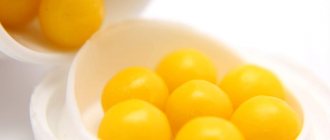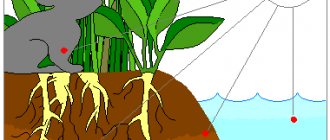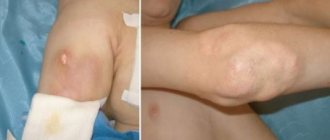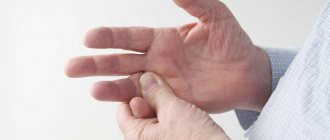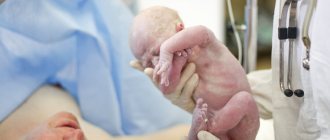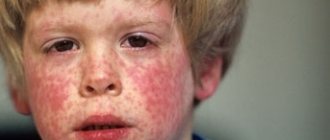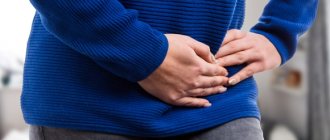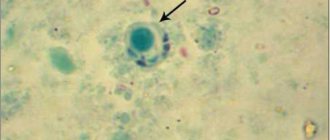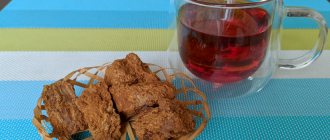Gastroenterologist
Vinogradov
Dmitry Alekseevich
5 years experience
Gastroenterologist
Make an appointment
Ascariasis is damage to the small intestine of the body by helminthic infestations. The causative agent is roundworms - roundworms (hence the name), which parasitize the human intestinal tissue.
Intestinal nematodosis (another name for the disease) occurs everywhere in people of different ages and genders, regardless of climatic conditions.
Main symptoms of the disease
Symptoms of ascariasis depend largely on the extent of damage to the small intestine, as well as the age of the patient and the stage of development of the disease.
The primary phase can occur without clinical manifestations, especially during the period of larval migration. A person may experience one or more characteristic symptoms:
- an allergic reaction is manifested by numerous rashes on the limbs or torso. They itch intensely, causing serious discomfort;
- infectious syndrome is expressed by elevated body temperature, excessive sweating, loss of strength;
- a liver factor may be observed - ascariasis is manifested by an increase in the size of the spleen and liver and causes pain under the ribs on the right side.
In most cases, the patient suffers from a wet or dry cough and severe shortness of breath, and experiences pain in the chest area. All this can lead to pleurisy.
If ascariasis in children or adults is advanced, a sharp decrease in appetite, diarrhea, nausea, vomiting, bloating, pain in the intestinal area, cramps, and weight loss may occur.
Are you experiencing symptoms of ascariasis?
Only a doctor can accurately diagnose the disease. Don't delay your consultation - call
Classification
Ascariasis is divided into several types based on different characteristics.
By type of disease there are:
- typical or manifest – occurs with the usual symptoms;
- atypical - asymptomatic form.
Taking into account the severity of the disease, the following forms of ascariasis are distinguished:
- light;
- medium-heavy;
- heavy.
Taking into account the characteristics of complications of the disease, the following forms are distinguished:
- without complications;
- with intestinal complications - possible complications include appendicitis , peritonitis , obstruction , pancreatitis , cholangiohepatitis ;
- with extraintestinal complications - liver abscesses, purulent cholangitis or pleurisy , sinusitis, abdominal abscess, etc.
There are two stages in the development of the disease:
- Migration – during this period the larva moves through the human body.
- Intestinal - during this period the larva finds itself in the intestine and grows rapidly.
Main causes of infection
The main cause of ascariasis is infection with helminth eggs, which occurs as a result of their entry into a person’s mouth after personal contact with an infected person, as well as with unwashed vegetables, fruits, berries, and household items.
Once inside the human body, the larvae hatch from the eggs and penetrate the circulatory system, spreading to the capillaries of the lungs. From there they reach the bronchi, trachea and pharyngeal area. There they are mixed with saliva, swallowed by a person and again enter the small intestine, growing there into full-fledged adults.
At-risk groups
By eating unwashed vegetables or fruits, and even simply taking a clean apple with dirty hands, a person can introduce parasite eggs into his own body. After entering an environment favorable for the worm to live in, it quickly grows and multiplies - this is how ascariasis develops. The following categories of people most often suffer from this disease:
- children under 6 years of age (can become infected when visiting a kindergarten, where the risk of transmitting helminthiasis from one child to another is so high);
- plumbers;
- personnel of wastewater and sewerage treatment plants;
- agricultural workers;
- Gardeners also often get sick.
Preventive measures
Prevention of ascariasis is based on timely detection of the disease and adequate treatment under medical supervision.
Of particular importance in this process is compliance with all hygiene rules: it is necessary not only to keep your hands and the hands of children clean, but also to instill in them proper hygiene habits.
Regular hand washing after a walk, visiting the toilet, before eating, as well as proper sanitary treatment of food that comes on the table can significantly protect the body from infection with roundworms.
Diet
Diet 5th table
- Efficacy: therapeutic effect after 14 days
- Duration: from 3 months or more
- Cost of products: 1200 - 1350 rubles per week
During the treatment of ascariasis, you should adhere to diet Table No. 5 . It is necessary to minimize fats, while increasing the consumption of protein foods. It is very important not to drink raw water and wash vegetables and fruits thoroughly.
The basic nutritional rules during this period are as follows:
- You need to consume a lot of vegetables, fruits, and grains.
- Minimize fatty foods, but still consume normal amounts of protein and carbohydrates.
- Drink enough fluids.
- Eliminate pasteurized foods from your diet.
- Do not eat chocolate and other sweets, and do not drink soda.
The following foods should be excluded from the diet:
- Muffins, pastries, pasta.
- Fatty fish and meat.
- High fat dairy products.
- Marinades, mushrooms.
- Sweets.
- Alcohol.
Diagnostic features
If you notice one or more symptoms of this disease in yourself or your child, you should seek help from an infectious disease specialist (in the case of a child, a pediatrician or pediatric infectious disease specialist).
Diagnosis of ascariasis involves a general blood test: the presence of the disease will be indicated by an increase in ESR and eosinophils, a slight increase in the number of leukocytes and a decrease in hemoglobin.
In addition, an X-ray of the lungs may be prescribed, which, in the presence of helminths, reveals foci of infiltration.
The presence of roundworms can be confirmed by microscopic examination of sputum.
It is important to seek help from a center with a truly competent specialist and high-quality equipment, since helminths tend to demonstrate themselves not in all tests. Only an experienced doctor is able to see their presence in the patient’s body.
Internal structure of the body of a roundworm
Digestive system
The mouth opening is located at the anterior end of the body and is surrounded by lips. The anterior part of the intestine, the pharynx, has dense muscular walls. Free-living nematodes feed on bacteria, algae, and organic debris - detritus. Some have cuticle outgrowths in the throat - peculiar teeth. With their help, nematodes pierce the integument of animals and plants.
Body cavity
Previously, nutrients were distributed throughout the body by a branched intestine. Now that the intestine has turned into a straight tube, this function has been taken over by the body cavity - the fluid-filled space between the skin-muscular sac and the intestine.
The liquid is not cells; it would leak out if it were not packaged in an impenetrable elastic cover. This cover is formed by a layer of ectoderm cells and covered with cuticle - a durable film. The cuticle not only protects against mechanical damage and toxic substances, but also restrains the pressure of the cavity fluid.
As a result, the body cavity, surrounded by a cuticle and filled with liquid, acquires the elasticity of an inflated ball and forms a hydroskeleton. It is the hydroskeleton that gives roundworms their characteristic shape and serves as a support for muscles. Their muscles are only longitudinal. They are located inside the cavity, along the walls of the body. By contracting alternately the dorsal and abdominal muscles, the worm bends and moves forward, lying on one side.
Gas exchange and metabolism
In free-living roundworms, gas exchange (oxygen consumption and carbon dioxide release) occurs through the integument of the body. In parasitic nematodes, the energy necessary for life is released due to the breakdown of organic matter accumulated in the body - glycogen. Due to the absence of a circulatory system, nutrients and waste products in the body are carried by the fluid of the primary body cavity.
Excretory system
The excretory system consists of two lateral blindly closed channels. They open outward with an excretory opening on the ventral side of the front of the body. The walls of the canals are formed by one or several very long cells (their length can reach 40 cm). Harmful substances formed in the body enter the cavity fluid, then into the channels of the excretory system and are eliminated.
Nervous system
The nervous system of nematodes is represented by longitudinal nerve trunks connected by annular bridges. Nerves extend from them to the muscles and sensory organs.
Sense organs
The sense organs of roundworms, especially parasitic species, are very poorly developed. On the front of the body there are setae that serve as organs of touch and olfactory pits. Some free-living creatures have primitive eyes.
Reproduction
Nematodes are dioecious animals. The genital organs have the shape of tubes: in females they are paired, in males they are unpaired. Females have paired ovaries and oviducts, one uterus and a genital opening that opens on the ventral side of the body.
The male has one filamentous testis, gradually turning into a larger vas deferens. It flows into the hindgut just before the anus. The male has retractable cuticular needles, with the help of which he introduces sperm into the female’s genital opening.
Every day, one female human roundworm is capable of producing 200,000 eggs. The eggs are covered with a dense shell that protects them from the effects of unfavorable factors (drying, etc.). The crushing of the egg and the development of the larva lasts about a month and can only occur in a humid environment with a sufficient amount of oxygen.
Treatment
Drug therapy based on the use of anthelmintics is prescribed. They are selected depending on what stage the disease is currently at. In some cases, a single dose for ascariasis may not be enough, and the drug will need to be taken 3 times with a pause between doses prescribed by the doctor.
If allergic manifestations are present, the doctor will additionally prescribe antihistamines. If a patient has stool upset, bloating and abdominal pain, and other intestinal disorders, then enzymes and probiotics are also selected for him.
At the end of the main treatment, over the next 3 months the patient is registered at the dispensary with periodic blood and stool tests.
Therapeutic measures
When roundworm is detected in the human body, treatment usually involves taking anthelmintic medications: Mebendazole, Albendazole or Ivermectin.
Albendazole for oral administration is usually prescribed in an amount of 400 mg per day. The use of Mebendazole can be divided into 2 times a day, 100 mg at a time, or a one-time dose of 500 mg, therapy continues for 3 days. The dosage of Ivermectin is calculated based on the patient’s weight at 150 or 200 mcg per kilogram. It should be mentioned that these medications are dangerous to take during pregnancy, so the risk of their use during this period must be justified by the indications.
Nitazoxanide shows good results in the treatment of mild to moderate ascariasis. The previously used drug Piperazine, due to its toxicity, has now been replaced by more advanced analogues.
In case of intestinal obstruction by adult helminths, in addition to anthelmintic drugs, surgical intervention to remove the worms may be required.
Answers to common questions
Is it possible to drive away roundworms with herbs?
Many medications contain herbal ingredients. Herbs also have a certain effect, but we must not forget about the serious adverse reactions that their thoughtless use can lead to.
It is strictly not recommended to treat ascariasis yourself with herbs.
Can I get rid of roundworms myself without seeing a doctor?
No, this is strictly prohibited, as it is fraught with poisoning of the body and the occurrence of serious complications in the functioning of internal organs, in particular the organs of the pulmonary system and intestines.
How is ascariasis transmitted?
The disease can be transmitted by shaking hands, as well as by other types of bodily contact.
The most common infection is through contact with poorly washed fruits, vegetables, berries and herbs. You should also remember about hand hygiene after returning from the street and visiting the toilet.
What foods can serve as a source of disease?
Absolutely any, if they are not processed properly.
Why does a cough develop with ascariasis?
Cough appears due to the penetration of larvae through capillary vessels into the area of the lungs and bronchi.
What is the prognosis after treatment for ascariasis?
The prognosis is generally favorable. After adequate treatment, complications can occur only in people with weak immunity and serious chronic diseases.
External structure
The body of roundworms is gradually narrowed towards the anterior and posterior ends, almost round in cross section, non-segmented. The outside of the body is covered with a cuticle; underneath it lies a layer of epithelial cells. Below are the muscles - four longitudinal single-layer ribbons. This structure allows roundworms to crawl by bending their body. The cuticle, epithelial cells and muscles form the skin-muscle sac (body wall). Between it and the intestine is the primary body cavity. It is filled with liquid, which, due to pressure, maintains a constant body shape, promotes the distribution of nutrients throughout the animal’s body, and the movement of decay products to the excretory organs.
These animals were the first to learn to burrow into soil or other substrate rich in food, such as plant tissue. Thus, they found not only a new habitat with its food supplies, but also shelter from predators - large eyelash worms.
With such a life, the mouth of roundworms is located strictly at the front end of the body. Pressure inside the hydroskeleton makes it difficult to swallow food. Therefore, their muscular pharynx acts like a pump with valves: it sucks in food and then forcefully pushes it into the intestine.
The external similarity of roundworms is due to the fact that, despite their widespread distribution, they all live in a similar environment - in a nutrient substrate. In bottom silt and soil, this “soup” is made up of the remains of organisms, along with bacteria and protozoa, and in plants and animals - the nutrients of their bodies. The main difficulty in these conditions is caustic chemicals. But the cuticle reliably protects against them. Some species can even survive in vinegar.
List of sources
- Avdyukhina T.N. Laboratory diagnosis of helminth infections / T.I.Avdyukhina, T.N.Konstantinova, Yu.P.Gorbunova // Part I. Nematodes: Textbook. allowance. -M., 1993. -60 p.
- Astafiev B. A. Achievements of domestic science in the study of helminth pathogenesis // Med. parasitology and parasitic diseases. - 1998. - No. 2. — P. 8.
- Vasiliev Yu.V. Diseases of the digestive system / Yu.V. Vasiliev. M.: “Dubl Freig Publishing House”, 2002. -93 p.
- Sergiev V.P. Parasitic diseases, their prevention and treatment //Epidemiology and infectious diseases. - 1997. - No. 2. — P. 8 — 12.
